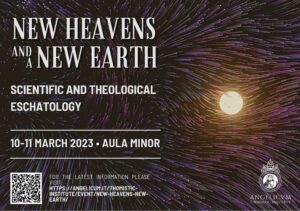The Universe as Described by the Standard Model of Cosmology: From the Big-Bang to the End of the Universe
Gabriele Gionti, SJ
Specola Vaticana and INFN
This seminar aims to introduce and discuss the standard model of cosmology, technically called “ACDM”. We will start introducing the Big-Bang theory and will mention, briefly, the Quantum Gravity problem. We will describe the evolution of the universe from the time above the Planck era up to emission of the first light of the universe (CMB), passing through the cosmological inflation epoch. We will mention that, before 1998, it was believed that, according to the value of the density of matter in the universe, there were three types of universes: Closed universe in which the universe ends in a Big-Crunch, Flat universe, in which the universe expands forever and Open Universe in which the density of the matter in the universe is not enough to stop the expansion of the universe. In 1998 the measure of the redshift of type IA supernova highlighted an acceleration in the expansion of the universe. This acceleration can be explained introducing the cosmological constant “ACDM”, in the Einstein’s equations, and dark energy which is an unknow type of energy in general hypothesized to be the remnant of the vacuum energies of primordial quantum fields.
We will discuss that some dynamic of the dark energy density causes that the universe could continue to expand, accelerating, ending up to the “Big Freeze” or “Heath Death”. Another dark energy density dynamic could generate an increase so much of dark energy density that gravitational binding among galaxies in cluster of galaxies, among objects inside each galaxy and even at sub-atomic level, among elementary particles, could be overcome by the acceleration. This end of the universe is called “Big Rip”. Another scenario foresees that the gravitational field will overcome the dark energy density so that the universe will end into a Big Crunch. We will also mention that in some quantum theory of the Big-Bang the universe will originally expand quite rapidly as in inflationary models, have a bounce and collapse back to the beginning. This future state of the universe is called Big-Bounce.
Gabriele Gionti, SJ is a Jesuit father born in Capua (CE). He completed his master in Physics at the University of Naples “Frederick II” in 1993 and his Ph.D. in Quantum Gravity in 1998 at SISSA-ISAS of Trieste. He did a postdoc at the Physics and Astronomy department of the University of California at Irvine, USA in 1999. He also did a joint postdoc Vatican Observatory-Steward Observatory at University of Arizona, Tucson, USA in 2004-2006. He owns a B.A. in Philosophy from the Gregorian University in Rome (2004) and MDiv (Master of Divinity), STB (Sacred Theology Bachelor), STL (Sacred Theology Licentiate) from the Jesuit School of Theology of Santa Clara University in Berkeley, California, USA. He has been ordained Catholic priest on 2010 and pronounced final vows in the Society of Jesus on 2019. Since September 2010 he is staff of the Vatican Observatory (Specola Vaticana) where he is carrying his research on Cosmology, Quantum Gravity, and Science-Theology dialogue. He is associate scholar at INFN (Italian Institute of Nuclear Physics) and affiliated partner-Staff scientists of the Steward Observatory of the University of Arizona, Tucson, USA. He has been appointed Vice-Director of the Specola Vaticana (Vatican Observatory) in Castel Gandolfo on August 1st 2022. He is member of IAU (International Astronomical Union), of the International Society on General Relativity and Gravitation and of the Italian Society of General Relativity and Gravitational Physics (SIGRAV). His research and publications are on theoretical cosmology and quantum gravity as well as themes on Science and Theology.
Related Content



